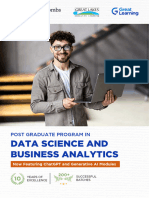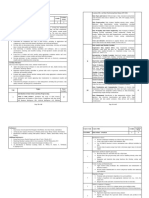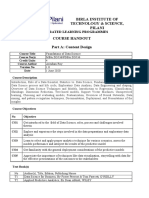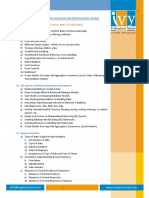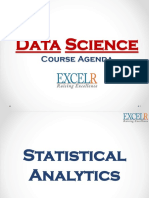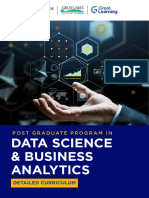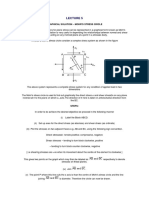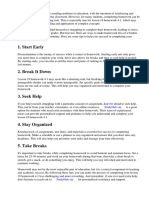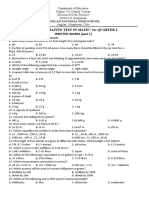0% found this document useful (0 votes)
16 views20 pagesLec PH618.01
The document outlines a course on data analytics, focusing on core concepts of probability, statistical inference, linear regression, resampling methods, and tree-based methods. It includes course objectives, evaluation criteria, and a comparison between data analytics and data science. Upon completion, students will gain foundational skills in data analysis, model performance evaluation, and an introduction to neural networks and deep learning.
Uploaded by
Asutosh PandaCopyright
© © All Rights Reserved
We take content rights seriously. If you suspect this is your content, claim it here.
Available Formats
Download as PDF, TXT or read online on Scribd
0% found this document useful (0 votes)
16 views20 pagesLec PH618.01
The document outlines a course on data analytics, focusing on core concepts of probability, statistical inference, linear regression, resampling methods, and tree-based methods. It includes course objectives, evaluation criteria, and a comparison between data analytics and data science. Upon completion, students will gain foundational skills in data analysis, model performance evaluation, and an introduction to neural networks and deep learning.
Uploaded by
Asutosh PandaCopyright
© © All Rights Reserved
We take content rights seriously. If you suspect this is your content, claim it here.
Available Formats
Download as PDF, TXT or read online on Scribd
/ 20












